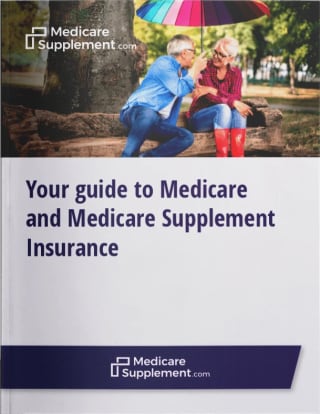Medicare Supplement Insurance is available nationwide to Original Medicare beneficiaries 65 years old and older.
Although Medicare Supplement insurance (Medigap) is primarily for senior citizens, it does cover under-65 Medicare beneficiaries who are disabled or have end-stage renal disease (ESRD).
For Medicare beneficiaries who are at least 65 years old, access to a Medigap policy is guaranteed during their Medigap open enrollment period. However, beneficiaries under the age of 65 do not have the same protections nationwide. Instead, those protections are regulated at the state level.
Some states guarantee that applicants under 65 will have access to at least one Medigap plan, whereas other states do not.

States with mandated Medigap coverage options for those under 65
According to a report by the Kaiser Family Foundation, there are 30 states that require insurers to offer at least one Medigap plan to qualifying Medicare beneficiaries under 65.1 Certain states guarantee coverage options for those with ESRD, for those with a disability, or both.
These state requirements can have a big impact on Medigap applicants under 65. For example, if you live in California and have Medicare coverage due to ESRD, a Medigap insurance company is not legally required to offer you a Medigap plan.
The state only protects applicants under 65 with a qualifying disability.
The following chart details the states that legally require Medigap plans to those under 65, along with the health requirements to qualify.
| States with guaranteed issue requirements for under-65 beneficiaries |
|---|
| Number | State | Disabled Beneficiaries | Beneficiaries with ESRD |
| 1 | California | ✓ | |
| 2 | Colorado | ✓ | ✓ |
| 3 | Connecticut | ✓ | ✓ |
| 4 | Delaware | | ✓ |
| 5 | Florida | ✓ | ✓ |
| 6 | Georgia | ✓ | ✓ |
| 7 | Hawaii | ✓ | ✓ |
| 8 | Illinois | ✓ | ✓ |
| 9 | Kansas | ✓ | ✓ |
| 10 | Louisiana | ✓ | ✓ |
| 11 | Maine | ✓ | ✓ |
| 12 | Maryland | ✓ | ✓ |
| 13 | Massachusetts | ✓ | |
| 14 | Michigan | ✓ | ✓ |
| 15 | Minnesota | ✓ | ✓ |
| 16 | Mississippi | ✓ | ✓ |
| 17 | Missouri | ✓ | ✓ |
| 18 | New Hampshire | ✓ | ✓ |
| 19 | New Jersey | ✓ | ✓ |
| 20 | New Mexico | ✓ | ✓ |
| 21 | New York | ✓ | ✓ |
| 22 | North Carolina | ✓ | ✓ |
| 23 | Oklahoma | ✓ | ✓ |
| 24 | Oregon | ✓ | ✓ |
| 25 | Pennsylvania | ✓ | ✓ |
| 26 | South Dakota | ✓ | ✓ |
| 27 | Tennessee | ✓ | ✓ |
| 28 | Texas | ✓ | ✓ |
| 29 | Vermont | ✓ | |
| 30 | Wisconsin | ✓ | ✓ |
The 30 states in the chart above have a guaranteed issue requirement, which means that insurance companies must offer at least one plan to qualifying applicants under the age of 65.
If applicants are under 65 and have Medicare Part A and Part B coverage, the insurance company must offer at least one Medigap plan to them in the qualifying states. Insurance companies are only required to offer one Medigap plan, but they are permitted to offer more options.
In addition to a guaranteed issue requirement, most of the 30 states above also have an open enrollment period requirement.
This is a period when Medicare beneficiaries under the age of 65 can enroll in a Medigap policy without having to go through medical underwriting. For policies obtained during this period, insurance companies cannot deny you coverage or force you to pay a higher premium due to any past or current health conditions.
If you qualify for Medicare and want to enroll in a Medigap plan, you should first check with your state insurance department to understand what rights you have.
1 https://kaiserfamilyfoundation.files.wordpress.com/2013/04/8412-2.pdf#page=24




